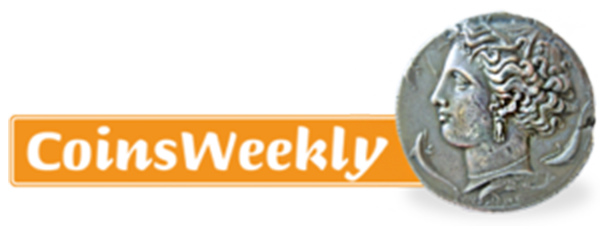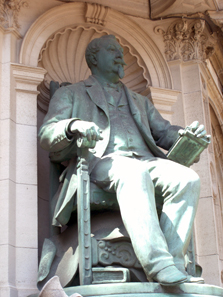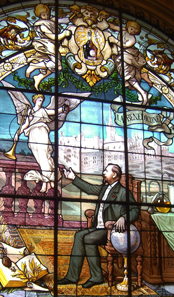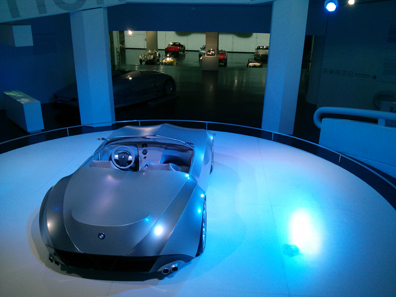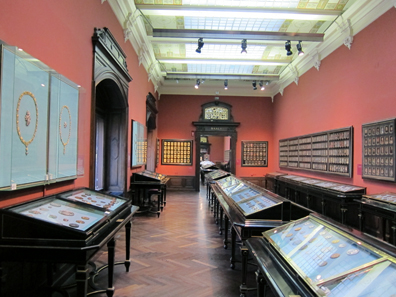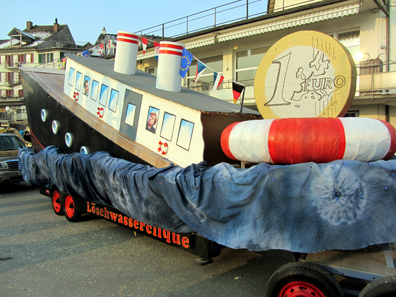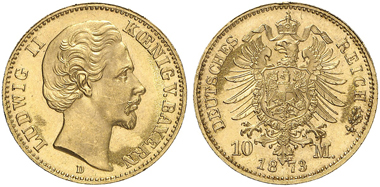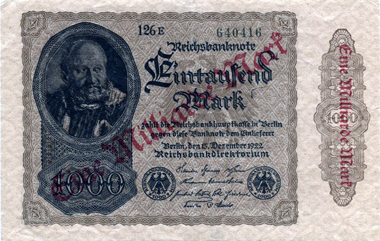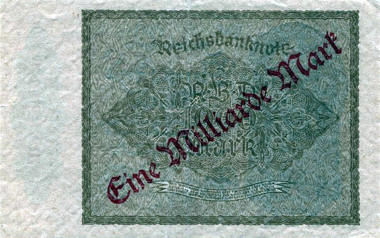by Ursula Kampmann
November 19, 2013 – Do you know who has invented the Corporate Museum? No, it wasn’t Walt Disney with his successful theme parks. The concept of the Corporate Museum reaches back much further. One of its earliest protagonists was the young entrepreneur Legrand.
Alexandre Legrand, who later spelled his surname Le Grand. Photo: KW.
In 1863, he considered how he could place his herbal liqueur on the market. Back then, there was a huge number of distilleries – no quaint small handicraft businesses but big factories. A particularly successful plant was owned by the Carthusian monks near Grenoble who marketed an exclusive product under the brand name ‘Chartreuse’, which derived its prestige from the Frenchmen’s fondness for the Middle Ages. You surely remember: in 1831, Victor Hugo’s novel about the Hunchback of Notre Dame had aroused so great an enthusiasm for medieval culture as it is hard to imagine nowadays. Prosper Mérimé travelled through France at royal command, in order to secure all the old churches that still delight tourists up to the present day. Viollet-le-Duc restored the derelict edifices and thus influenced the architects who created their neo-romantic churches of which The Basilica of Sacré-Coeur in Paris probably is the most famous one. Surrounded by all that excitement about the Middle Ages, Legrand reflected upon possible unique selling points for advertising his product on the market.
This is where the track record of a liqueur starts that has made its way into present times, the Bénédictine. Its name already testifies to the genius of Legrand manipulating the longings of his contemporaries. The recipe of Chartreuse allegedly dates back to 1604. He, Legrand, claimed to have found in the monastic library of the old Benedictine abbey of Fécamp the recipe – which had been forgotten during the times of the revolution -, that had been used by monks as early as medieval times to produce their herbal liqueur. That, however, didn’t make the Bénédictine the favorite drink of the Parisian society. Legrand achieved that with the help of a Corporate Museum: he had his company headquarters in Fécamp built in neo-gothic style and equipped it with medieval set pieces. Every illustration, every exhibit, every text solely aimed to prove that the Bénédictine did indeed date back to the Middle Ages.
An icon of the history of Public Relation: The Apotheosis of the Benedictine. Photo: KW.
In those days, Fécamp was a trendy bathing resort and very popular with French aristocrats and business people. The summer vacationists relieved their boredom with every sort of forays, likewise into the exhibition premises of the Palais Bénédictine where they – being slightly fuddled after all the tasting – listened and read about the made-up story about the invention of the liqueur over and over that, eventually, the tale became both a fact and a part of the brand.
Why do I tell you that story? This marketing victory from past times shows how simple it is to manipulate history as long as no one interferes. We ought to say good-bye to the concept that history is absolute and unchangeable. Every era, every social group, and naturally every brand creates its own history. The tools for creating history are, by tradition, papers and books, movies and, with increasing frequency, museums. And these new museums have nothing in common anymore with the 19th-century showroom deserts that were as dry as a bone.
Even though numismatists and economic historians have their problems with the novel achievements of scenography: the future doesn’t belong to the museum as an institution for education and science, but to the event, the experience that puts the visitor at its center of attention. Most curators still think that their work is done once they have equipped a showcase with coins that come with interesting stories. By sticking to that, they underachieve and don’t exploit everything possible, namely to use the emotions of the visitors for giving them our intended message to take along.
Future, Present, Past united in the BMW Museum. Photo: Tamás András Kálmán / Wikipedia. CC 2.0.
A Corporate Museum is a museum that pursues a special purpose. It is not by chance that the most successful brands throughout the world are actually building their Corporate Museums right now. Germany takes a leading role here. At this point, I would like to name just a few commissioners of exhibitions that opened only recently: BMW, Mercedes Benz, Audi and Volkswagen, FC Bayern, Borussia Dortmund, German Football Association, BASF with its coating museum, Villeroy & Boch with a pottery museum, The Steiff Museum for cuddly animals, the Dr Oetker World for fans of cakes and pudding, the games company Ravensburger and many, many more, including some small and rather unfamiliar brands like the manufacturer of horseradish products, Schamel, with his horseradish museum, or the marzipan producer Niederegger with its Marzipan Museum in Lübeck.
But why do all these successful companies spend money on building museums? Is it because they care so much for the education of the people? Certainly not. It’s something completely different. A Corporate Museum and a conventional museum only share the name. With their museums, the marketing teams have a magnificent tool to connect the visitor to the celebrated brand on an emotional level, to make the visitor become part of the greater whole, to transport him to a parallel universe where everything revolves around the brand.
No wonder that the terms ‘event’ and ‘world’ are used excessively when it comes to choose a name for Corporate Museums. In the multimedia, three-dimensional staging, the visitor becomes part of the world of products for the duration of one or several hours and intertwines his own emotions intimately with the sentimental associations triggered by the tour around the museum.
That makes it possible to embed all the messages in the visitor’s memory much more effectively than any commercial(s) could do. Anyone who has taken a tour through the BMW World will positively feel confident that it is – and always had been – the enthusiasm for technical innovations that motivate the employees of BMW, and that this enthusiasm will automatically be transferred upon the driver once he chooses a BMW. Just like the fan of the FC Bayern that, after having visited the FC Bayern World, considers himself an essential and indispensable part of the world of soccer. The primary goal of BMW and FC Bayern – and of all the other new museum owners – that is to earn money, completely fades into the background here.
The permanent exhibition of the coin collection of the Kunsthistorisches Museum, Vienna, opened in 1891. Photo: KW.
Most of you surely have a vague idea about how a traditional exhibition is made: one looks for a subject-matter, does research on it and illustrates the result of that research with suitable objects. The aim of a well-made exhibition is to provide the visitor with the information he needs to form his own opinion. With a Corporate Museum, it works exactly the other way round. First of all, the message-to-be-sent has to be pinpointed. Only in a second step the topics are selected that serve to illustrate that message. They are not supposed to make the visitors reflect but rather accompany the message the marketing team has chosen for the exhibition. This means, in regard to the Corporate Museum, the most important step is to formulate the message – as explicit as possible, as catchy as possible.
And that takes us right to a basic problem of central banks and mints alike. It seems that our sector still doesn’t need to work out a profile of their brands. We sell a few commemorative coins, launch accompanying press releases, but we haven’t done a good job of connecting coins, bank notes and currencies to emotions yet.
You want to know if that is possible? But of course. Only few products are so closely linked to the realm of emotions as money. The first pocket money, the first salary, the lucky penny in the wallet. There would be so many possibilities for us to load cash with emotions, in order to score against debit card and remittances. That, however, is another issue that would lead us too far.
A private, very catchy statement about the credibility of the Euro seen at the carnival of Rapperswil / Switzerland. Photo: Roland zh / Wikipedia. cc3.0 Unported.
So, let’s imagine I was responsible for creating an exhibition on behalf of the German Central Bank in order to comment on the euro crisis. It would be completely foolish to gather facts and figures about the euro, in order to convince a visitor of my point of view. With horror I remember an exhibition of a central bank where one could read on large boards, densely covered with writings and footnotes, how exactly a central bank works in order to provide a stable currency. These gray text deserts were counterproductive! They confused every visitor and created an atmosphere of mystery, incomprehensibility, and thus rather increased insecurity.
So, if it is not possible to give an account of a complex subject-matter in just three short sentences avoiding all borrowed words, forget the intellectual examination of the topic. There is enough sophisticated literature in the book shop. But: an exhibition is NOT the right place for long texts. You should work with emotions instead. That enables you to reach your visitor directly and to make your core message embedded in his subconscious even after he has already forgotten what exactly he had seen in your museum.
In our present case, that is, when the stability of the euro is the topic, a message ought to be formulated that discourages the indefinable anxiety, and restores the visitor’s confidence that the current crisis, too, will take a turn for the better. Personally, I would choose the following message: Germany has experienced horrible monetary crises again and again. But thanks to the powerful German economy, and thanks to the hard work of every single German citizen, every crisis so far has turned out well.
The self-confidence so established in every visitor is a much better means for overcoming fears than every argument solely addressing the intellect.
We have established the message. Let’s turn to the next step, the choice of the time-frame and the subjects. And here it is necessary to restrict yourself. Too much material overwhelms the visitor and lets the objects exhibited become interchangeable. Numismatists often make the classic mistake of loading their showcases with coins. A single piece, coming in a marvelous staging, is far superior to tiers of similarly looking pieces that look very much alike to the layman.
Limiting the time-frame likewise is an art in itself. I virtually don’t know ANY coin exhibition that DOESN’T start with the 7th century B. C. and the electrum coinages of Asia Minor. Lexicographically speaking, that might be nice. But what do these coins contribute to our message? So, let’s do without all that historical scrap metal and focus on the essentials – in our case, the time when the political Germany became a German nation, hence the time following the unification in 1871.
German Empire. Bavaria. Ludwig II. 10 mark 1873. Photo: Künker.
The new coins of the first unified and standardized imperial currency embodied two emotionally laden terms at once we can associate the German currency with, namely justice and stability. In 1871, Germany was given the first money that didn’t actually place the humble worker, who had to calculate in pfennig, at a disadvantage against the rich citizen who paid with gold gulden and heavy thalers only. The decimal system made it possible for the first time in history ever to exchange small change without intrinsic value for silver and gold coins of stable value, without having to pay high fees. That enabled ordinary people as well to save money and to forge an existence. With its currency reform with fineness and weight of the new coins being determined, the state guaranteed for the money put aside to maintain its value. Generally speaking, that already included a basic claim that is still at the heart of every economic system: justice – even though one might discuss at length what that entails exactly – and stability.
And this is the contrast to an exhibition in the traditional sense: It’s not enough to just say that there was such thing as a monetary reform, it’s about the EMOTIONS associated with the old money and the new one. What did the imperial eagle stand for that can be found on German coins until the present day? He represented stable money one could count on, until a German emperor became obsessed by the idea that Germany needed a place in the sun…
Weimar Republic. 1000 mark 1922 stamped as 1 million mark. Photo: MoneyMuseum.
And that would make another typical German message: war destroys. War destroys everything that man created. No one can keep his fortune in times of war. Economy can thrive only in times of peace. It goes without saying that this implicitly refers to the euro again. As common currency, the euro brings Europe closer together and, in doing so, prevents such appalling wars as the ones that crushed the German monetary system twice.
That is why, when addressing the inflation of 1923, I wouldn’t restrict myself to that year of hyperinflation but begin as early as August 1914, when the Reichsbank suspended its obligation to convert its bank notes into metallic money. The result was an inflation that made each capital fall to one tenth of its former value. The subsequent hyperinflation of 1923 was more or less a historical footnote, since at the end of the day it really doesn’t matter if you own nothing or a fraction of nothing. Addressing that inflation not merely in terms of numbers would make sense. A visitor can only truly identify when he is led to reflect upon the actual living conditions of a family that had lost all property because of the war. It is so much more impressive to use concrete examples to illuminate war and the repercussions of war!
Clients lining up before the butter shop of the Groh brothers in Berlin. Photo: Bundesarchiv, Bild 146-1971-109-42 // CC-BY-SA.
The miracle of the ‘Renten’- or ‘Reichsmark’, respectively, that put an end to the runaway inflation from November 1923 onwards, and the economy’s blossoming in the 1920s would be another marvelous example.
Naturally, a numismatist would immediately add the Great Depression of 1931 to it. In the Corporate Museum, however, we are not obliged to deal with setbacks. They only become a subject-matter when they can be used to emphasize the initial message or, by the catharsis of sympathizing, to prompt a close emotional connection on the part of the museum’s visitor. In soccer museums, for example, these community-building defeats are absolutely essential. Just think of the Wembley goal! There are still ongoing discussions if, had the referee decided otherwise, the German players would have been able to win the World Cup Final after all!
Defeats and victories are ideally suited for identification with a product when they are linked to a collectively experienced injustice or, rather, if a glorious rise from the ruins was achieved.
Change office: Only banknotes were changed. Coins kept for a short term their validity. Photo: Bundesarchiv, Bild 147-0739/CC-BY-SA.
That is what makes the history of the monetary reform and the introduction of the German mark a perfect means to boost identification with the German currency. The facts have been repeated over and over. The pictures look much alike. Empty shop windows, black market, long queues before the exchange offices – it is always the same. But real feelings aren’t prompted by that. Why not tell the story of the ordinary dairy man instead, the one from München-Schwabing with his new motorbike? You see, the monetary reform – and that is often the case in history – hasn’t rendered the small change invalid. The dairy man, who had hoarded the pfennige, was able to buy himself a new motorcycle and hence belonged to the currency reform’s winners. The German mints are especially likely to be delighted by that story. It illustrates the value of the small change and is a modern reading of the old German saying that the one who saves a penny earns a penny.
Let’s summarize what has been said so far: for a Corporate Museum, we need a message. Only after that message has been worded, we check the historical material as to what incidents are particularly suited to illustrate that message. The most reasonable way is to tell the stories afresh with small episodes, preferably by concrete characters that add to the overall picture and allow the visitor to relate to them.
Photomontage of the German 50 pfennige 1950 (Photo: Künker) and a typical German “trümmerfrau” (Photo: Deutsche Fotothek df_ps_00000074).
The next task is to choose objects that fit. If, for example, we look for an iconic coin representing the ‘wirtschaftswunder’ (economic miracle) a numismatist might pick mark and pfennig. There could be nothing more wrong! After all, neither mark nor pfenning evoke any deep emotions. But just imagine the effect of the 50 pfennige obverse with the kneeling woman pricking in the oak sprout, mounted in high magnification on a background that shows a war-ravaged city! The great German oak tree being cut down and destroyed, but the economic miracle rising from ruins all the same.
Choose for your exhibition those coins and motifs that truly convey emotions. And these certainly aren’t the numismatically intriguing pieces that require lengthy explanations as to WHY they are so intriguing. A good exhibit conveys the emotion without needing a commentary, given that it is perfectly staged.
I can imagine some of you having problems to tell history only in fragments and in an emotional way. Perhaps you remember how often history was and still is abused to cloak injustice with historical reasons. I, too, would have moral scruples when I had to design an exhibition of a traditional coin cabinet, adhering to the principles of the Corporate Museum in a public museum with public funding. You see, that form of exhibiting has no place in a traditional museum. But it really makes sense when a central bank wants to counter fears or misconceptions, when a mint wants to market itself and its products better.
So, before working out a concept for an exhibition, one should reflect upon its goal. In this regard, Corporate Museums are a new interpretation of an old idea. Let’s exploit its potentialities without losing sight of our ethical obligations. As long as we only make a well-considered choice from history to illustrate our message, we are just one of many historians doing the same – with being more or less aware of it. Every age writes its own history and chooses its own tools in order to transfer that history to its contemporaries.


